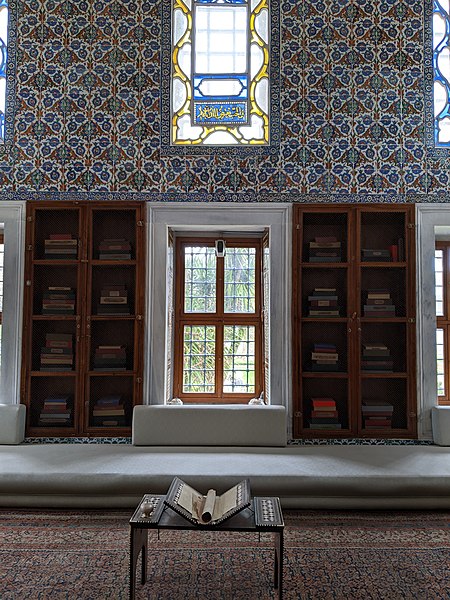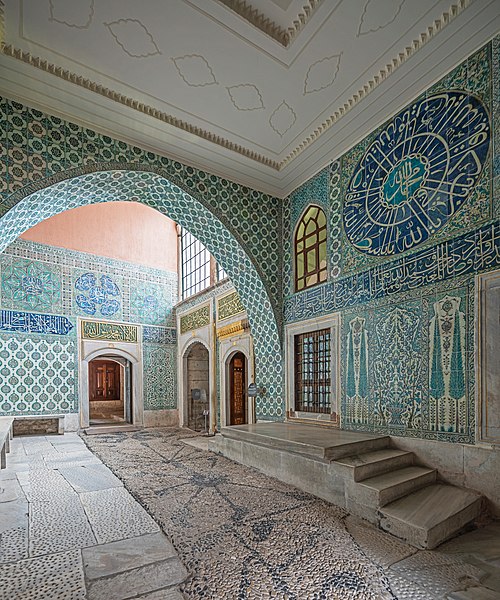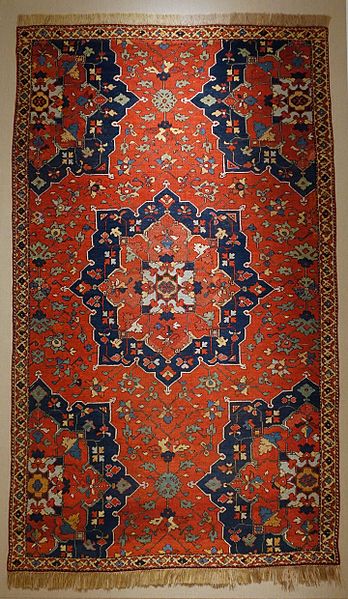Culture of the Ottoman Empire
The culture of the Ottoman Empire evolved over several centuries as the ruling administration of the Turks absorbed, adapted and modified the various native cultures of conquered lands and their peoples. There was influence from the customs and languages of nearby Islamic societies such as Jordan, Egypt and Palestine, while Persian culture had a significant contribution through the Seljuq Turks, the Ottomans' predecessors. Despite more recent amalgamations, the Ottoman dynasty, like their predecessors in the Sultanate of Rum and the Seljuk Empire were influenced by Persian culture, language, habits, customs and cuisines.Throughout its history, the Ottoman Empire had substantial subject populations of Orthodox subjects, Armenians, Jews and Assyrians, who were allowed a certain amount of autonomy under the millet system of the Ottoman government, and whose distinctive cultures were adopted and adapted by the Ottoman state.

Reconstruction of an Ottoman style library, in the Topkapı Palace museum
Tile walls of the harem of the Topkapi Palace
Details of Süleymaniye Mosque, one of the best examples of Ottoman architecture
16th-century wool carpet from Ushak, Turkey
Classical Ottoman architecture
Classical Ottoman architecture is a period in Ottoman architecture generally including the 16th and 17th centuries. The period is most strongly associated with the works of Mimar Sinan, who was Chief Court Architect under three sultans between 1538 and 1588. The start of the period also coincided with the long reign of Suleiman the Magnificent, which is recognized as the apogee of Ottoman political and cultural development, with extensive patronage in art and architecture by the sultan, his family, and his high-ranking officials.
Image: Beyazıt Mosque
Image: Selimiye Mosque dome (retouched 2)
Image: Istanbul Feb 2020 11 34 40 642000
Üç Şerefeli Mosque in Edirne (1437–1447)








